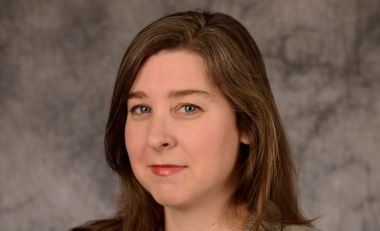Introduction
Notre Dame’s high-profile re-emergence among college football’s elite has focused new attention on the university’s long-standing claims that it does things “the right way” — that football players are treated like anyone else on campus, with no special favors.
The boasts of lofty moral standards have long struck other schools’ fans as a bit sanctimonious. But they are getting fresh scrutiny now, in part because the bright lights of college football’s biggest stage have brought renewed attention to a two-year-old case involving a Notre Dame player and chilling allegations of sexual assault.
In August 2010, 19-year-old freshman Lizzy Seeberg accused the athlete of sexually assaulting her in his dorm. She filed a report with campus police, which sat on it for two weeks before even interviewing him. By then, Seeberg had committed suicide. Administrators would later convene a closed-door campus disciplinary hearing—three months after Seeberg’s death became national news—in which the player was found “not responsible.” In the university’s only direct comment on the case, Notre Dame’s president, the Rev. John I. Jenkins, told the South Bend Tribune in December 2010 that university police had conducted a “thorough and judicious investigation that followed the facts…” He acknowledged, however, that the inquiry could have been conducted “more quickly, perhaps.” The player, who has not been publicly identified, reportedly has never missed a game, nor presumably will he miss tonight’s national championship contest with Alabama’s Crimson Tide. Meanwhile, a small but vocal number of critics are asking pointed questions about how this case was handled, and wondering aloud whether Notre Dame’s righteous rhetoric is really a fiction.
As tragic as the details of the Seeberg case are, they are actually far from unusual. The struggles that colleges have faced in addressing campus sexual assault were the subject of an investigation by the Center for Public Integrity beginning in 2009. Published in a six-part series, “Sexual Assault on Campus: A Frustrating Search for Justice,” the investigation showed that campus judicial proceedings were often confusing, shrouded in secrecy and marked by lengthy delays, leaving alleged victims feeling like they were victimized a second time. Those who reported sexual assault encountered a litany of institutional barriers that often led to dropped complaints. Even students found “responsible” for alleged sexual assaults often faced little punishment, while their victims’ lives frequently turned upside down. Many times, victims dropped out of school — or worse — while their alleged attackers graduated.
The Center series — done in collaboration with National Public Radio — shed light on what Education Department officials have since called “an epidemic of sexual violence” on campuses. According to a report funded by the Justice Department, roughly one in five women who attend college will become the victim of a rape or an attempted rape by the time she graduates. Much of the problem is up to the institutions to address, because prosecutors face imposing obstacles in filing criminal charges; allegations come down to he-said-she said accounts that may be colored by alcohol, while physical evidence and eyewitness testimony are often lacking.
In April 2011, the Education Department’s civil rights office unveiled its most thorough guidance on how schools must respond to student complaints of campus rape. The 19-page “dear colleague letter,” combined with a unique enforcement strategy, has spurred change at dozens of schools nationwide, including Notre Dame. There’s also proposed federal legislation aimed at combating campus sexual violence.
The guidance hasn’t pleased everyone, and the legislation is, for the moment, stalled. Sadly, cases like Seeberg’s continue to make headlines. The latest comes from elite Amherst College, where a former student has documented allegations of her school’s callous treatment following an alleged rape by a classmate. Highly emotional, colored by broader cultural stereotypes, these cases remain among the thorniest for colleges and universities. Even so, lawyer Brett Sokolow, who advises college administrators, says he believes they have improved their handling of what he calls “the garden variety cases” — those without ties to money or influence.
But “the old rules still apply if [the alleged assailant is] a star athlete or a student president…Corruption still exists in those cases,” he says, while adding he’s not familiar with the details of the Seeburg case.
Changes
That new federal guidance, announced with fanfare by Vice President Joe Biden, says schools have an obligation, under the federal law known as Title IX, to investigate student complaints, and to take prompt and effective action to end harm.
The guidance has drawn fierce pushback, much of it focused on a policy the civil rights office was already enforcing: that schools should rely on the more lenient evidence standard in these cases — “preponderance of evidence” rather than the higher “clear and convincing” or even “beyond a reasonable doubt” evidence standards. Groups like the Foundation for Individual Rights in Education, which advocates for free speech and due process, have penned multiple letters arguing that such a “weak” principle undermines, in its words, “the reliability, integrity and basic fairness of the disciplinary process.”
“We see the burden of proof on many campuses being the only protection an accused student has,” says FIRE’s Joe Cohn, whose last letter, in May 2012, included 19 professors, lawyers and other individuals as co-signers.
Taking a cue from the department, many colleges and universities were using the preponderance standard when the guidelines came out. Others have followed suit. Some 40 schools at last count have also adopted what administrators describe as “the easy things” — policy reforms and procedural fixes like hiring a Title IX coordinator and offering appeal rights to both the accused and accusing students. Some administrators are even clamoring for more guidance to clear up lingering “confusion” about what Title IX requires.
By all accounts, the civil rights office has become far more aggressive since December 2010, when it announced its first in a series of “model” settlements with schools regarding policies on campus sexual assault. These settlements have emerged from “compliance reviews” that were pushed by the Education Department’s assistant secretary for civil rights, Russlynn Ali, who stepped down in early December. Unlike formal complaints, which students must file before the office can act, these compliance reviews have allowed the department to act proactively in response to allegations of campus sexual violence.
To date, there have been 11 such reviews — and the first one was at Notre Dame. Prompted by the Seeberg case, the civil rights office launched a seven-month investigation into how the school handles all sexual assault complaints. That ended in June 2011 with a “voluntary resolution agreement,” in which Notre Dame agreed to speed up investigations, adopt the “preponderance” standard, and issue no-contact orders for alleged assailants and their alleged victims, among other things. Seth Galanter, the civil rights office’s acting director, declined to discuss the Notre Dame resolution, citing its “open” status. The office is currently monitoring the school to ensure its compliance.
Many of the reviews are ongoing, but the office has hammered out similar settlement agreements with such schools as Eastern Michigan and Yale. Last spring, it took the rare step of joining the Justice Department in examining how the University of Montana, as well as local law enforcement, handle campus rape allegations — after several prominent cases there, some involving football players. The civil rights office has even seen the number of formal complaints from students filed against schools soar to more than 120 in the past four years— a rise of more than 41 percent.
“One of our goals,” Galanter says, “is to make sure the April 2011 ‘dear colleague’ letter isn’t just a piece of paper.”
A multi-front struggle
Over on Capitol Hill, victim advocates have pressed for passage of the Campus Sexual Violence Elimination Act. Filed in the fall of 2010, the federal legislation was meant to codify the Title IX guidance, creating minimum, national standards for colleges and universities. Two years later, after lobbying by FIRE and others brought about changes in the bill, some supporters now actually oppose it. The most notable change: the bill would no longer require schools to use the “preponderance” standard.
“Now we have this monstrous bill all wrapped up in nice sounding language,” says lawyer Wendy Murphy, a prominent victim advocate. She believes the bill, stripped of that mandate, would give institutions leeway to use a higher burden, thus in her view undermining the guidance.
Bill supporters counter that the SaVE Act would still require that institutions expand programs to offer prevention awareness and bystander intervention education, meant to stop sexual assaults from occurring. And the legislation would improve victim protection, they say, by guaranteeing counseling, legal assistance, and medical care on campus, as well as other accommodations.
“We didn’t get everything we wanted,” agrees Daniel Carter, a long-time victim advocate now with the VTV Family Outreach Foundation, who helped draft the original bill. But “no one was willing to sacrifice [the whole measure]” he explains, to preserve a few of its mandates.
Administrators and advocates alike expect the legislation to pass — eventually. It had been incorporated, as Section 304, into the Senate’s re-authorization of the Violence Against Women Act, but not the House’s. Advocates were pinning their hopes on the bill making it in the final version of VAWA until the House let it expire at the end of the congressional session on January 3. Now, it will have to be re-introduced, as will the stand-alone version of the bill. Its sponsor, Senator Robert Casey Jr., a Democrat from Pennsylvania, will keep working to ensure final passage of the Campus SaVE Act in the 113th Congress, his office says.
For all the attention on campus sexual assault, it remains an intractable and complex problem. The cultural climate surrounding these cases is tense— especially those involving athletes. They are, after all, popular public figures who may be pivotal to the reputation and success of a school’s highest-profile programs.
It all feels painfully familiar to Laura Dunn, whose case was featured in the Center series; in 2005, she reported her allegations of rape by a crew member at the University of Wisconsin-Madison. He denied the allegations. It took the university nine months to contemplate, and then reject, filing disciplinary charges against him.
“It’s almost like you’re attacking something bigger than the individuals who assaulted you,” Dunn says. When she thinks about how much progress colleges have made in combating campus sexual assault, her thoughts turn to Lizzy Seeberg and that Notre Dame football player.
“Until college athletes are handled differently,” Dunn says, “nothing has changed.”
Read more in Education
Sexual Assault on Campus
Campus Sexual Violence Elimination Act headed for President’s signature
Legislation addresses issues raised by Center’s campus sexual assault investigation
Sexual Assault on Campus
Te’o saga brings renewed criticism of Notre Dame
Critics: school’s aggressive defense of football star contrasts with handling of student’s sex assault charges against another player




Join the conversation
Show Comments